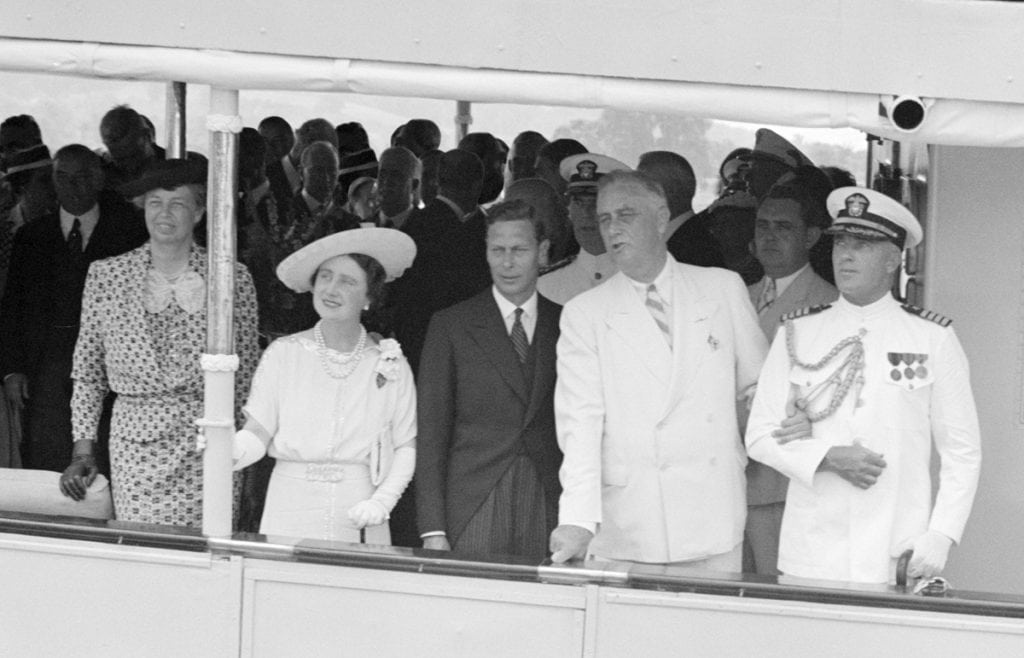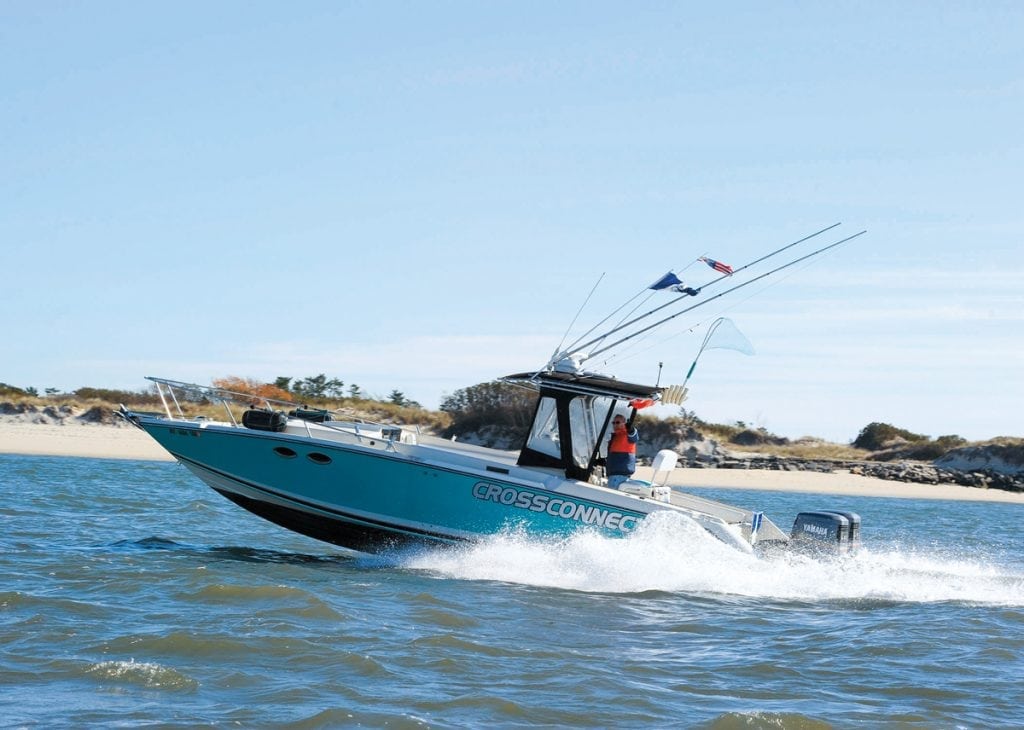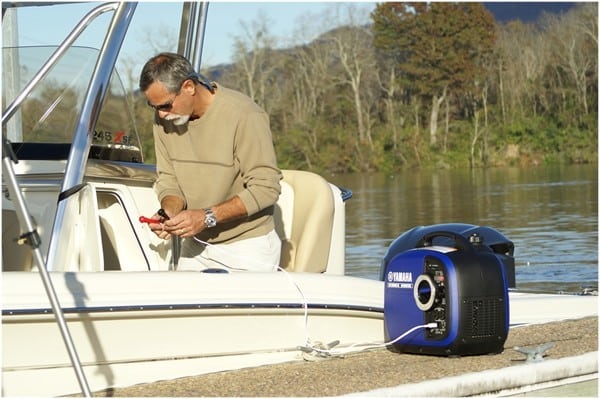It’s not all hosting parties and poker games. Plenty of diplomacy discussions and secret salvations happened aboard. These are the secrets of Presidents on Yachts that shaped history.
There is a storied history of Presidents on Yachts– including some secrets hidden from the general public. One such example: in 1893, President Grover Cleveland (above) was in a major political battle over repeal of the Sherman Silver Purchase Act. His position was opposed by many in Congress as well as by Vice President Adlai Stevenson, grandfather of the 1950’s presidential candidate bearing the same name. On June 18th, while the debate raged, Cleveland noticed a rough spot on his palate and when the presidential doctor stopped by for a social visit, his quick examination revealed there was a lump. Sending samples to the Army Medical Museum and a consulting doctor at Johns Hopkins Hospital, the diagnosis was a cancerous growth. The doctor reported the finding to President Cleveland adding, “Were it in my mouth, I would have it removed at once!”
Learning that the cancerous tumor had to be removed from his jaw, Cleveland hesitated because he was worried the news of his ill health and surgery would strengthen Stevenson’s position. Under pressure to have the surgery promptly, the President grudgingly consented, but only if the condition and circumstances of surgery be kept secret. That meant he could not be admitted to a hospital because word would be leaked quickly to the press.
Whisked Away
Presidential advisors devised an ingenious plan for the President to take a vacation cruise aboard the ship Oneida, which would sail leisurely up the East River in New York. On June 30th, President Cleveland arrived in New York with some friends for what most people thought was the beginning of a presidential vacation. Already on board, however, was a team of doctors who were secretly escorted to the Oneida hours earlier.
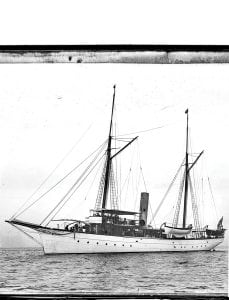
Describing the scene that evening, H. Paul Jeffers, author of An Honest President: The Life and Presidencies of Grover Cleveland, wrote, “Nobody watching from Pier A could have suspected that the president was in New York for a grim purpose. He settled into a deck chair, lit a cigar, and chatted until midnight as though he were a man without a care.”
The ship’s bar had been converted into an operating room, and on the following day, Cleveland underwent the operation while strapped in a barber’s chair. As the Oneida moved along at half speed, a dentist pulled two teeth, and the surgeons removed the entire upper left jaw from the president’s mouth. A rubber prosthesis was fitted to form an artificial jaw that proved undetectable.
Declaring the surgery a success, President Cleveland was on his feet in three days and went ashore unassisted. The conspiracy of silence was so complete that it took nearly a quarter century before a full account of Cleveland’s cancer and surgery was revealed. President Cleveland’s position prevailed over that of his vice president as Congress repealed the silver clauses of the Sherman Act on August 28, 1893.
That historical footnote is one example of the way American presidents have used yachts. Before Camp David offered a president privacy and refuge and long before Air Force One lent itself to presidential travel and decision making, many U.S. presidents used yachts as places to conduct official business, relax with family and friends or conduct secretive negotiations. Although Oneida was not an official presidential yacht, those that were offered presidents the privacy and solitude they needed to make important decisions. What follows are some fascinating details about several presidential yachts and how they were used.
River Queen
While guiding the nation through the pains of a civil war, President Abraham Lincoln, on several occasions, used the River Queen. The steamer was leased by the Quartermaster General War Department from George N. Power at the hefty price of $241 per day. On that vessel, Lincoln held a peace conference with Confederate representatives Vice President Alexander H. Stevens, Senator Robert M.T. Hunter and Assistant Secretary of War John A. Campbell at Hampton Roads on February 3, 1865. At the end of March, Lincoln met with Ulysses S. Grant, William T. Sherman and David Dixon Porter on the River Queen to discuss the end of the Civil War.
Mayflower
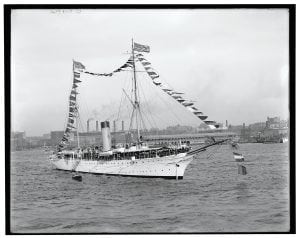
Theodore Roosevelt used the Mayflower for diplomacy. Anchored in Oyster Bay, New York, near his Sagamore Hill home, the ship served as a floating negotiation center for delegates to the 1905 conference that ultimately ended the war between Russia and Japan and earned Roosevelt the Nobel Peace Prize. During World War I, President Woodrow Wilson wrote these words from his cabin aboard the 275-foot Mayflower: “A point is reached where I must escape for a little while.” It was essential, he told a daughter, “to get away from the madness… of Washington for a day or two, not to stop work… but to escape people and their intolerable excitements and demands.”
Potomac
Franklin Delano Roosevelt often sailed on two presidential yachts, the Sequoia and the Potomac. On both ships, Roosevelt had an elevator installed to aid his movements between decks. On the Potomac, the elevator was concealed in a false smokestack. The elevator was operated by the President using a rope and pulley. An electric motor could easily have been installed, but Roosevelt used the elevator as a form of exercise. In 1939, he entertained King George VI and Queen Elizabeth of England.
In her book No Ordinary Time: Franklin and Eleanor Roosevelt, author Doris Kearns Goodwin writes “For the president (Roosevelt), the Potomac offered the perfect escape from both the heat of Washington and the persistent ring of the telephone. Having loved the water since he was a child, he enjoyed nothing more than sitting on the deck, an old hat shading his head from the sun, a fishing rod in his hands. The Potomac was not a luxury liner but a converted Coast Guard patrol boat, rough and ready, tending to roll with the waves, a sailor’s boat, with a fair top speed of sixteen knots.”
Roosevelt used the yacht to entertain politicians, host world leaders, play poker with friends, work on his stamp collection, and on one occasion, broadcast a “fireside chat” to the nation from a tiny radio room on board.
USS Williamsburg
By the time Harry Truman assumed office, the Potomac had been condemned by the Navy Department as being unfit for duty in open waters. As a result, the USS Williamsburg was commissioned the new presidential yacht. President Truman first cruised on the Williamsburg on November 10, 1945, and then used the ship to entertain a variety of foreign leaders including Prime Minister Winston Churchill. The Williamsburg was manned by the U.S. Navy involving 8 officers, 130 enlisted men, and 26 stewards.
Sequoia
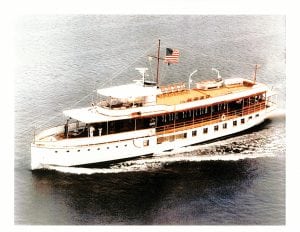
Herbert Hoover loved spending time on the Sequoia. She was the longest-serving of the executive yachts. He was often seen playing medicine ball on its top deck. In 1932, the questionable decision to use a photo of the yacht as the centerpiece of his annual Christmas card drew mass criticism from a public who found such promotion to be indicative of Hoover’s inability to grasp the suffering caused by the Great Depression.
During subsequent presidencies, two of the most important decisions of the 20th century were made on the Sequoia. Franklin Roosevelt and General Dwight D. Eisenhower made plans for D-Day while aboard. Harry Truman is said to have pondered his decision to drop the atomic bomb on Japan while in seclusion on the Sequoia.
Faced with the decision to resign as a result of the Watergate scandal, President Richard Nixon boarded the Sequoia. Writing about those hours, Nixon’s daughter, Julie, recalls being invited to join “mother and him for dinner on the Sequoia. I do not think anyone in the family, with the exception of my father, ever thoroughly enjoyed the rather public rides on the Sequoia, but we recognized they were relaxing for him.
Being on the Sequoia was like bobbing along in a glass bottle. The boat moved at a snail’s pace, with no particular destination and under full view of escort Coast Guard speedboats. Now, in August of 1974, a flotilla of press accompanied us also. Reporters and photographers were posted as well at every bridge. We were the subject of a deathwatch.” Four days after the Sequoia trip, Nixon announced his resignation from the presidency.
The end to an Era of Presidents on Yachts
The Sequoia faithfully served several of the nation’s more recent presidents and their families. John F. Kennedy celebrated his last birthday on board the ship. Lyndon Johnson used it several times, although his height caused him problems due to the low ceilings. Johnson had the floor of the shower in the presidential stateroom lowered six inches so he could stand up in the shower. He also had a bar installed in place of Franklin Roosevelt’s wheelchair elevator.
Finally, when Jimmy Carter became president, he deemed the Sequoia a waste of taxpayer money. He said there was no need for the yacht. As a result, it was auctioned off for $286,000 in 1977.
By Victor M. Parachin, Southern Boating July 2018
All photos are from U.S. Library of Congress


